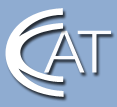Explore high-paying careers in clean, high-tech Connecticut manufacturing.

Educators: Externships
Externship Summary - 2005
RCNGM Leader: John Hoyle, Machine Drafting
Howell Cheney Technical High School
Externship: MTU Aero Engines
Lessons Learned
This project would have been greatly enhanced by actual visits from engineers or technicians from outside companies – who could comment or offer assistance. The MTU experience was directly related and invaluable to this project. The MTU work environment is strongly focused on production, virtually a job shop environment. MTU also allowed a glimpse at European management techniques – which differ from the American companies which I’ve worked for.
A Plant Tour would also have enhanced the students understanding of Process. Perhaps CBIA could allow time to make a film of this – I’d be happy to volunteer and use my own digicam.
Finally; the students really enjoyed this project. They truly learned by doing. Unfortunately, while we can computer model all phases of work, and create operations sheets, it is impossible to have any real-world machining operations take place.
THE IDEAL: Would be a company allowing us to have a sample of a product in various stages of manufacture, allow students to create Operations sheets in the classroom – and as a final closure – to visit the plant and observe how the part is actually made – following one thru the shop.
Impact on Student Learning
I presented this curriculum to an integrated group of diverse 10 th graders – this group included 12 students of whom 4 were female. I used examples of actual products in stages of process-development to help explain the importance and concept of Process planning and documentation. Students were given a series of hands-on exercises. The most beneficial presentation was achieved using an actual part donated by Hamilton Sundstrand – which was a scrapped valve casing. Students first had to sketch the part, measure it – and create both 2D drawings and 3D models.
The initial work of measuring the part was extensive – a learning experience in itself – This involve proper measuring techniques, establishing locations as datums, and determining feature sizes.
Once the initial parts were designed they represented a finished product – now the reversal – the creation of the various stages in manufacturing the product – would begin.
As a requirement – students were responsible for determining:
- Part Weight (in pounds) at each stage of development
- Amount of material (in pounds) removed at each operation
- Approximate (estimated) machining times for each operation
- Type of machine that would be selected to perform each operation
- Approximate number of different fixtures needed for each operation and for the entire project.
Students needed to use a variety of reference materials – the Machinist Data Handbook, Material density references, Carr-Lane catalogs for fixating ideas, Text references on types of machines and their functions.
I found Process Sheets to be a fascinating subject - from simply determining the phases in a parts development – a pyramiding increase in skill was required. Students had to interface with manufacturing to determine common depths of cut, approximate machining times; students needed an understanding of the relationship between mass – density and volume – in order to understand how the computer calculates the weight of a 3D model. 3D modeling skill was already well understood by this group, however, the CAD program only used Pounds / Sq In. and most densities in our texts were given in either (kilograms per cubic meter) or (grams per cubic centimeter) thus we needed to calculate conversions. We created an Excel spreadsheet for the conversions. Luckily, we found Metweb (www.Metweb.com) which already had the converted value. Another consideration was metal alloys – the students immediately saw the complex situation that arises when metals are alloyed. While we did not assume that our product was an alloy – it was a great learning moment when students realized that companies often develop unique alloys which require them to determine all mass-properties, such as weight – outside of standard charts.
Using CAD modeling (Cadkey) students were able to add material, enter density and get weight information. By subtracting the weight before and after a process – amount of material removed (by weight) could be determined.
Process speed were roughly estimated based on some highly fudged factors – my primary goal was the created of operations sheets showing before / after drawings of the product, process time was a secondary consideration – although – I made it clear to the class that in industry time estimates can be a make-or-break talent.
Externship Sustainability
(John Hoyle will be participating in another externship in the summer of 2006)





